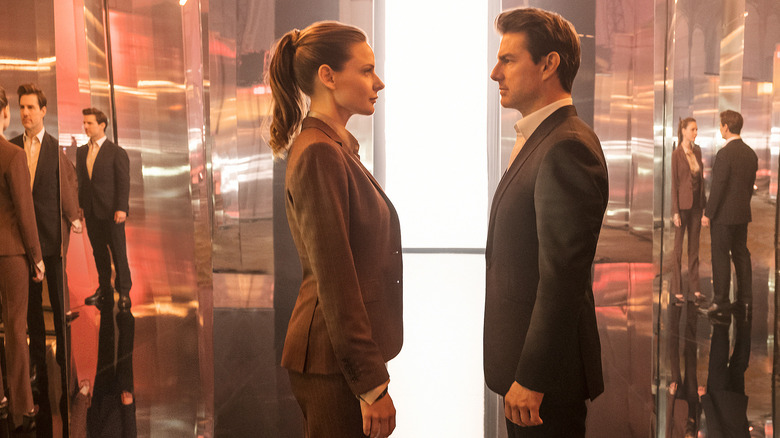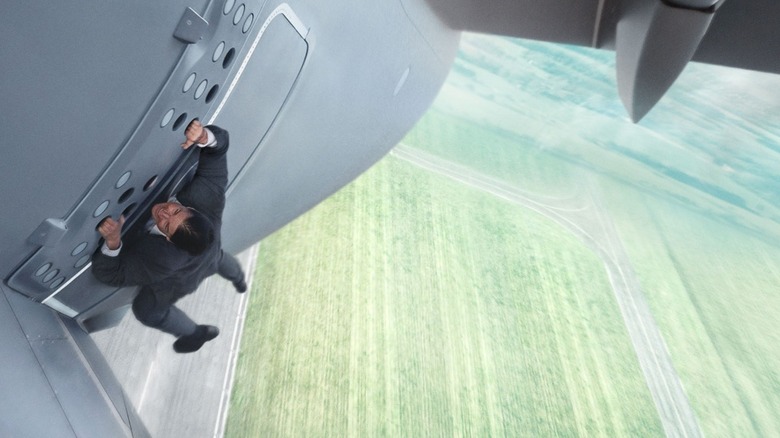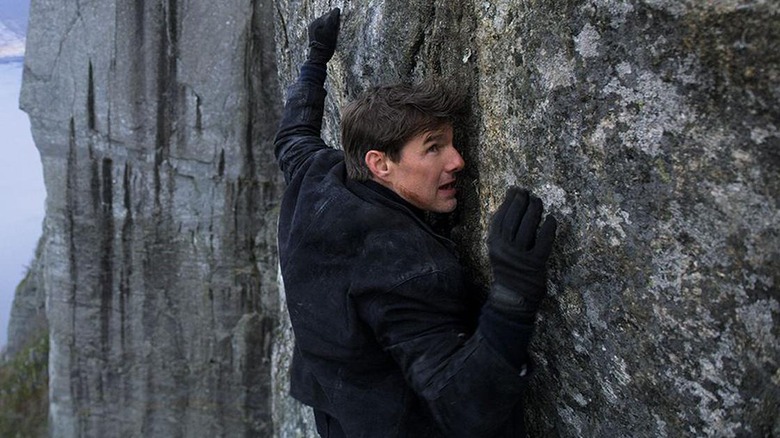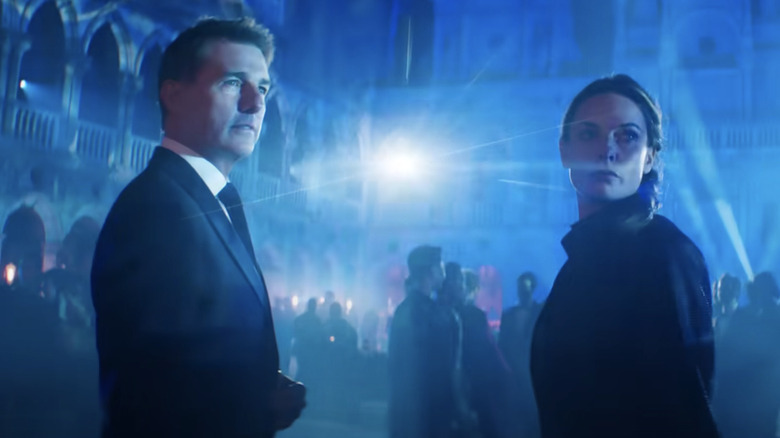Christopher McQuarrie Had One Concern About Directing Another Mission: Impossible Film After Rogue Nation
The "Mission: Impossible" franchise is a revolving door. Countless characters appear in one movie and then vanish without a trace, let alone a name-drop, from the next one. The only anchors from the beginning to the present are Tom Cruise as Ethan Hunt and Ving Rhames as Luther Stickell.
These hi-and-byes happened behind the camera too. From the first 1996 "Mission: Impossible" up to 2015's "Mission: Impossible — Rogue Nation," each film had a different director. This was what kept the franchise fresh even though the scripts were formulaic (Ethan's framed for treason by the real mole in every other movie). Each director had a different style and so told the story in a different way.
Brian De Palma's original "Mission: Impossible" had the most low-key set pieces but still had his usual boiling suspense; take the scene where Ethan is accused of being a mole by his handler Kittridge (Henry Czerny) in a montage of dutch angle close-ups. Directing "Mission: Impossible II," John Woo took the ingredients for a Bond movie with Hong Kong-style over-the-top action.
J.J. Abrams made a breezy, well-cast, back-to-basics thriller (with a mystery box at the center) in "Mission: Impossible III." Brad Bird, befitting his background in animation, focused mostly on high-tech set pieces in "Mission: Impossible – Ghost Protocol," which remains the most sci-fi-flavored "Mission: Impossible" film. In "Mission: Impossible – Rogue Nation," Christopher McQuarrie scaled back the gadgets but kept the action just as death-defying, creating the most consistent thrill ride of the series to that point. Ilsa Faust (Rebecca Ferguson), the anti-hero of "Rogue Nation," was also the first character in the series who could be an almost equal foil for Ethan.
Then, "Mission: Impossible – Fallout" broke a pattern that had been going on for five movies; McQuarrie returned to the director's chair.
Cruise and McQuarrie's Partnership
Cruise and McQuarrie first worked together on "Valkyrie," a historical thriller about the failed "Operation: Valkyrie," the 1944 attempt to assassinate Hitler (unfortunately, they had less luck than the Inglourious Basterds). McQuarrie co-wrote the script and Cruise played Claus von Stauffenberg, the turncoat German Colonel at the conspiracy's center.
Cruise recruited McQuarrie to do an uncredited rewrite on "Ghost Protocol," before McQuarrie finally directed the star in 2012's "Jack Reacher." With this experience, McQuarrie became the natural choice to helm "Rogue Nation." Since co-writing 2014's "The Edge of Tomorrow," every movie McQuarrie has directed, written, or produced has starred Cruise; outside of "Mission: Impossible," he produced the sequel "Jack Reacher: Never Go Back," and is credited on the screenplays of "The Mummy" and "Top Gun: Maverick." When Cruise asked McQuarrie to again direct the sixth "Mission: Impossible," though, the latter had a condition. Namely, he didn't want "Fallout" to be a retread of "Rogue Nation."
A new crew
McQuarrie is well aware that the charm of "Mission: Impossible" is in how different each one feels. In a behind-the-scenes feature on the making of "Fallout" he said:
"One of the signature elements of the 'Mission: Impossible' franchise is that there is a different director for every single movie. And when Tom asked me to come back and direct this one, I said I'll do it on the condition that I can maintain that aesthetic. It has to feel like a different movie. It can't feel like a continuation of the last film."
McQuarrie reiterated this while speaking to /Film in 2018, while also elaborating on the risks of the choice:
"I was convinced that a third film in the tone of 'Ghost' and 'Rogue' risked being cute. At the same time, the franchise was working. Changing the formula meant risking all of that good will and momentum. I convinced Tom that, if the brand were to grow, we had to take a chance and change course. That meant a film different not just in look, but in feel – with a darker tone; good characters making bad decisions."
So, how was this different aesthetic achieved? Simple, a different cinematographer, production designer, and composer. "Ghost Protocol" and "Rogue Nation" were shot by Robert Elswit, while "Fallout" was shot by Rob Hardy. "Rogue Nation" has more saturated yellow in its palette while "Fallout" boasts cooler tones, particularly in the Himalayas-set climax. "Ghost" and "Rogue" production designer Jim Bissell was replaced by Peter Wenham while McQuarrie swapped his usual composer Joe Kraemer for Lorne Balfe.
For "Fallout," the conductor was the same, but the players were different.
The partnership continues
McQuarrie is returning again for the two-part "Mission Impossible: Dead Reckoning." In keeping with his approach to "Fallout," the films have a new cinematographer (Fraser Taggert) and production designer (Gary Freeman). Lorne Balfe, however, will be returning to score the film.
The "Fallout" cast has praised McQuarrie, with Michelle Monaghan (Ethan's ex-wife Julia Meade) saying, "Not only is he a great filmmaker, he's a great writer." As for Cruise and McQuarrie's partnership, Simon Pegg (Benji Dunn) called them, "a great team. Tom is such a force of nature and you have to be able to stay level with him in order to kind of absorb his creativity, and I think McQ totally has that."
Cruise himself called McQuarrie "enormously talented," and feels their partnership works because, "We share the same sensibility in storytelling and style." What sensibility is that? Well, going off "Mission: Impossible," no director is better than McQuarrie at devising daredevil stunts for Cruise to pull off and defy death.



